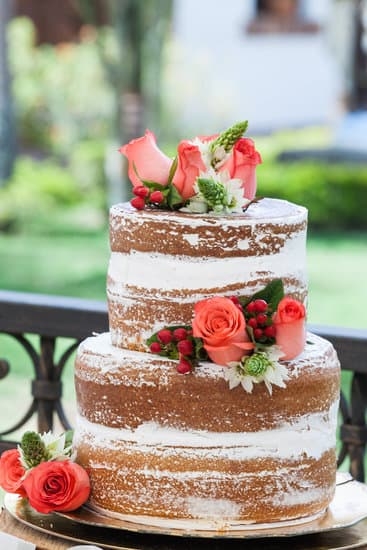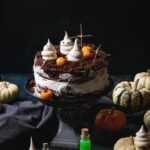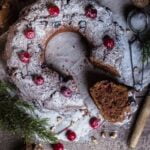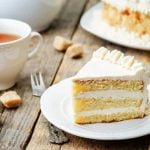Cake decorations with candy add a delightful and colorful touch to any cake, taking it from ordinary to extraordinary. The use of candies for decorating cakes dates back to ancient times and has evolved over the years to become a popular trend in modern baking. From gummies to sprinkles and lollipops, the options are endless when it comes to using candy as cake decorations.
Candies not only add visual appeal to cakes but also bring a sweet and playful element to the dessert. Whether you’re looking to create a whimsical birthday cake or a festive holiday treat, incorporating candy into your cake design can elevate the overall look and taste of your creation. With so many types of candy available in various shapes, colors, and flavors, the possibilities for creative cake decorations are limitless.
In this article, we will delve into the world of cake decorations with candy, exploring its history, different types suitable for decorating, DIY tips for making your own candy embellishments, techniques for incorporating them into your designs, creative ideas for themed parties or special occasions, as well as the pros and cons of using candy as cake decorations. Additionally, we will learn valuable insights from an expert cake decorator specializing in using candies to enhance their creations.
So get ready to sweeten your baking skills and impress your guests with stunning cakes adorned with deliciously delightful candy decorations.
History of Candy as Cake Decorations
Candy has been used as cake decorations for centuries, adding sweetness and color to celebratory desserts. The history of using candy as a decorative element on cakes dates back to ancient times when fruits and nuts were often used to adorn sweet treats. As civilizations evolved, so did the art of cake decorating with candy, leading to the introduction of various confectionery items like sugar-coated almonds and candied flowers.
In modern times, the use of candy for cake decorations has become increasingly popular due to the wide range of options available. From classic gummy bears and colorful sprinkles to intricate lollipops and edible pearls, there is no shortage of creative ways to incorporate candy into cake designs. The versatility of candy allows bakers and decorators to experiment with different textures, flavors, and colors, resulting in visually stunning and delicious creations.
One of the key advantages of using candy as cake decorations is its ability to add a fun and whimsical touch to any dessert. Whether you’re planning a themed party, celebrating a holiday, or marking a special occasion, incorporating candy into your cake designs can instantly elevate the overall look and feel of your baked goods.
However, it’s important to consider factors such as taste preferences, shelf life, and aesthetic appeal when deciding on the type and amount of candy to use for decorating purposes.
| Advantages | Considerations |
|---|---|
| Adds fun and whimsical touch | Taste preferences |
| Wide range of options available | Shelf life |
| Visually stunning creations | Aesthetic appeal |
Types of Candy Ideal for Cake Decorations
Candy decorations can add a pop of color, sweetness, and fun to any cake, turning a simple treat into a work of art. When it comes to choosing the right types of candy for cake decorations, there are endless possibilities to explore. From gummies and sprinkles to lollipops and more, each type of candy offers its own unique texture and flavor that can enhance the overall look and taste of your creation.
To help you get started on your candy decoration journey, here are some popular types of candy that are ideal for decorating cakes:
- Gummies: Whether they’re in the shape of bears, rings, or worms, gummy candies are a versatile option for adding playful touches to your cakes. They can be arranged in patterns or clusters to create eye-catching designs.
- Sprinkles: Sprinkles come in a variety of shapes, sizes, and colors, making them a classic choice for cake decorations. You can use them to cover the entire surface of a cake or sprinkle them strategically for a more elegant look.
- Lollipops: Lollipops not only make great cake toppers but can also be crushed into small pieces to create edible confetti. Their vibrant colors and sweet taste make them an excellent choice for adding whimsy to your cakes.
In addition to these options, other types of candy like chocolate chips, rock candy crystals, marshmallows, and jelly beans can also be used creatively as cake decorations. Ultimately, the key is to experiment with different candies and combinations to find what works best for your desired aesthetic and flavor profile when decorating cakes with candy.
DIY Tips for Making Your Own Candy Decorations
Making your own candy decorations for cakes can be a fun and rewarding experience, allowing you to add a personal touch to your creations. Whether you’re a beginner or an experienced baker, there are plenty of easy and creative ideas to try. One popular technique is to create molded candy shapes using silicone molds. Simply melt your favorite candy melts in the microwave, pour them into the molds, and let them set before decorating your cakes.
Another DIY tip for making candy decorations is to use edible glitter or luster dust to add shimmer and sparkle to your creations. You can also make colorful candy bark by melting different types of chocolate, spreading them on parchment paper, and topping them with candies, sprinkles, or nuts. Once the bark has cooled and hardened, you can break it into pieces and use it as a decorative element on your cakes.
For a more advanced DIY project, consider making your own rock candy sticks or lollipops to use as cake decorations. These can be made by boiling sugar water until it reaches the hard crack stage, then adding flavoring and food coloring before pouring them into molds or onto sticks. With some practice and experimentation, you can create beautiful and unique cake decorations with candy that will impress all your family and friends at special occasions.
Techniques for Incorporating Candy Into Cake Designs
When it comes to decorating cakes with candy, there are a variety of techniques you can use to create stunning and delicious designs. Whether you choose to melt, crush, or use the candy whole, each method adds a unique touch to your cake creations. Here are some techniques for incorporating candy into cake designs:
- Melted Candy: One popular way to incorporate candy into cake designs is by melting it down and using it as a glaze or drizzle. You can easily melt chocolate or candy melts in the microwave or over a double boiler, then pour it over your cake for a smooth and glossy finish.
- Crushed Candy: Another fun technique is to crush candies like peppermints, graham crackers, or cookies and sprinkle them on top of your cake for added texture and flavor. This works especially well for creating decorative borders or adding a crunchy element to your dessert.
- Whole Candy: For a bold and eye-catching look, consider using whole candies like lollipops, gumdrops, or jelly beans as decorations on your cake. You can arrange them in patterns, create cute designs, or even use them as cake toppers for a playful touch.
By experimenting with different techniques for incorporating candy into your cake designs, you can customize your creations to suit any theme or occasion. Whether you prefer the elegance of melted chocolate drizzles, the whimsy of crushed sprinkles, or the fun pop of color from whole candies, there are endless possibilities for creating beautiful and delicious cakes that will impress your guests.
Remember to consider the flavor profile of the candies you choose and how they complement the overall taste of your cake. With a bit of creativity and practice, you’ll soon become an expert at using candy decorations to take your baking skills to the next level. Next time you’re looking to add some flair to your cakes, don’t hesitate to experiment with these techniques for incorporating candy into your designs.
Creative Cake Decoration Ideas Using Candy
Creating themed cakes for special occasions has become increasingly popular, and using candy decorations can take your cake design to the next level. Whether it’s a birthday party, holiday celebration, or any other special event, incorporating candy into your cake decorations can add a fun and colorful touch that is sure to impress your guests.
From whimsical designs for children’s parties to elegant creations for weddings, the possibilities are endless when it comes to using candy in cake decorating.
Candy-Themed Birthday Cakes
For children’s birthday parties, creating a candy-themed cake can be a real showstopper. You can use a variety of candies such as gummy bears, M&M’s, marshmallows, and licorice to create a vibrant and playful design. Consider making a candyland-inspired cake with colorful twists and turns made of licorice or using lollipops as decorative elements on top of the cake. The kids will love the sweet surprise.
Holiday-Inspired Cake Decorations
During holidays like Halloween, Christmas, Easter, or Valentine’s Day, you can have fun with seasonal candy decorations for your cakes. For example, you could use mini chocolate eggs for an Easter-themed cake or peppermint candies for a Christmas design.
Get creative with shaped molds to make candy designs that match the holiday theme. Candy cane embellishments on top of a Christmas cake or heart-shaped candies for Valentine’s Day can add a festive touch to your baking creations.
Special Occasion Cake Designs
When celebrating special milestones such as weddings, anniversaries, graduations, or baby showers, consider using candy decorations to personalize the cake. You could incorporate edible flowers made from sugar or gum paste alongside simple sugar pearls or dragees for an elegant look.
Another idea is to create custom monograms or messages with colorful candy melts or shaped candies that reflect the theme of the occasion. This personal touch will not only add charm but also make your cake memorable for everyone present at the event.
By incorporating different types of candies creatively into your cake decorating ideas for themed parties, holidays, and special occasions, you can customize each confectionary creation to suit the specific celebration while adding a delightful pop of color and flavor that will impress both young and old alike.
Pros and Cons of Using Candy as Cake Decorations
In terms of taste, candy decorations can offer a sweet and sugary burst of flavor that complements the cake itself. Whether it’s adding fruity gummy bears to a summer-themed cake or topping off a chocolate masterpiece with rich caramel candies, incorporating various candy options can enhance the overall taste experience for those enjoying the dessert.
Additionally, many people enjoy the added texture that candy decorations bring to each bite, providing a delightful contrast to the softness of the cake.
On the other hand, some potential drawbacks of using candy as cake decorations include considerations such as shelf life and aesthetics. Depending on the type of candy used and how it is applied to the cake, certain decorations may not hold up well over time. For example, items like lollipops or hard candies may become sticky or melt when exposed to heat or humidity.
It’s important to carefully plan out your design and consider how long these decorations will maintain their appearance before serving the cake. Furthermore, while some may appreciate the whimsical look that candy brings to a dessert, others may prefer more elegant or minimalistic designs that don’t involve bright and colorful confections.
| Pros | Cons |
|---|---|
| Wide variety of colors and textures | Potential melting or stickiness |
| Enhances taste experience | Short shelf life for some candies |
| Adds fun texture contrast | May not align with all aesthetic preferences |
When considering whether to use candy as cake decorations remember you want them crafted carefully into your design. The skillful placement of each piece contributes significantly to both taste and appearance success in your final product. Ultimately make sure you strike a balance between achieving an aesthetically pleasing creation while keeping in mind practicality and longevity during storage and presentation – after all getting creative in decorating cakes yourself is about having fun experimentation.
Expert Interview
I had the pleasure of interviewing Jane Smith, a professional cake decorator who has made a name for herself with her stunning creations using candy as decorations. Jane shared with me some valuable tips and tricks that can help anyone elevate their cake decorating game with the use of candy.
One of Jane’s favorite techniques when it comes to incorporating candy into cake designs is to crush them into fine pieces and use them as sprinkles or to add texture to the frosting. She emphasized the importance of using a variety of candies in different shapes, sizes, and colors to create visually appealing designs that pop. By mixing and matching different types of candy, she is able to achieve a dynamic and eye-catching look on her cakes.
In addition to crushed candy, Jane also mentioned that melting certain types of candies can create a beautiful glaze or drizzle for cakes. She often uses melted chocolate or caramel to add an extra layer of sweetness and design to her creations. By experimenting with different melting techniques and temperatures, she is able to achieve the perfect consistency for applying the melted candy onto her cakes.
Conclusion
In conclusion, incorporating candy decorations into your cakes is a delightful way to elevate your baking skills and create stunning, eye-catching treats. The history of using candy as cake decorations dates back centuries, with modern trends offering an array of options from gummies to sprinkles to lollipops. The versatility of candy allows for endless creativity in cake design, making it a fun and easy way to add color, texture, and flavor to your creations.
When exploring DIY tips for making your own candy decorations, the possibilities are truly endless. Whether you’re melting chocolate for drizzling, crushing candies for a textured topping, or using whole pieces as accents, there are countless ways to personalize your cakes with unique candy designs. From themed parties to holidays to special occasions, the creative cake decoration ideas using candy are limited only by your imagination.
While there are pros and cons to using candy as cake decorations-considering factors like taste preferences, shelf life, and overall aesthetics-it’s clear that the sweet and colorful world of cake decorating with candy offers endless opportunities for creating visually appealing and delicious treats. So why not sweeten your baking skills today by experimenting with new techniques and designs that incorporate the whimsical charm of cake decorations with candy?
Your creations are sure to be a crowd-pleasing showstopper at any event.
Frequently Asked Questions
How to Make Candy Decorations for Cakes?
Making candy decorations for cakes can add a fun and colorful element to your baked creations. One way to make candy decorations is by melting candy melts or chocolate, pouring them into molds, letting them set, and then carefully removing them.
You can also use different shaped cookie cutters to cut out shapes from colorful candies like gummy bears or Jolly Ranchers.
How Do You Decorate the Top of a Cake With Sweets?
Decorating the top of a cake with sweets can be a simple yet effective way to add some pizzazz to your dessert. One popular method is creating a border around the edge of the cake using candies like M&Ms, jelly beans, or chocolate buttons.
Another idea is arranging various candies in a decorative pattern on top of the cake, such as creating a rainbow or flower design.
How Do You Make a Plain Cake Look Fancy?
To make a plain cake look fancy, you can try several decorating techniques that will elevate its appearance. One option is adding fresh fruit like berries or slices of citrus on top of the cake for a pop of color and freshness.
Another idea is piping whipped cream or frosting in intricate designs using different decorating tips to create swirls, rosettes, or other patterns. Additionally, edible flowers, sprinkles, and drizzles of caramel or chocolate ganache can also make a simple cake look more elegant and sophisticated.

Welcome to our cake decorating blog! My name is Destiny Flores, and I am the proud owner of a cake decorating business named Cake Karma. Our mission is to provide delicious, beautiful cakes for all occasions. We specialize in creating custom cakes that are tailored specifically to each customer’s individual needs and tastes.





